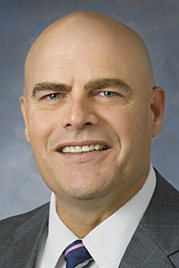-
Texas Knight
- Current Issue
- Archive
- About
- Contact
 Texas Knight
Menu
Texas Knight
Menu
Vol. 2, 2024 - 2025

October is the month that we celebrate the patron and namesake of our Order, Christopher Columbus. In recent years, Columbus Day has spurred a debate about the legacy of the man the holiday is meant to celebrate. The passage of time makes it easy for some to disparage his legacy, however it’s important to view the deeds of Columbus within the context of his historical time-frame. It is simply unreasonable to ignore the resolve and fortitude possessed by the 41-year-old navigator that allowed him to disregard the opinion of skeptics and cynics throughout the European Continent and lead four treks across previously uncharted waters in wooden boats not designed for such a voyage, and to discount the positives that came from his journeys. In fact, known today as the “Columbia Exchange,” the voyages of Columbus facilitated the cultural and biological exchange of plants, animals, technology, culture, and ideas and between the Western and Eastern Hemispheres, between the Old and New Worlds, bringing about a new modern age that would change the world forever.
Just as essential to what drove Columbus to take on such a dangerous voyage was his faith. As Catholic historian Warren H. Carroll explains, the importance of his faith on his motivation cannot be overlooked. For example, Columbus chose a day to depart that “reflected his profound Catholic faith and that of his crew. August 2, 1492 was the fiesta of Our Lady of Angels, patroness of the Franciscan monastery of La Rábida whose friars had supported Columbus and called for the realization of his dream from the beginning.” Carrol further explains that Columbus was “convinced that God had chosen him to reach [a] land, hidden from the Western world for ages, which the Roman philosopher Seneca had once prophesied would be revealed. His discovery would bring the Catholic Faith, to which he was devoted, to the people who lived in that land.”
While he was regarded by many Americans as someone who embodied the bold and adventurous spirit that was the essence of being an American, that small group of Catholic men who met at St. Mary’s Parrish in New Haven CT, were attracted to Columbus for additional reasons. Many agreed with Columbus’ prophetic belief that he was the man who brought the faith to the New World. At the time of the founding of the Order, when our Catholic faith was routinely under siege, Columbus was a potent symbol to American Catholics. Dr. M.C. O’Conner, a founding member of the first council in New Haven, called the Knights “Catholic decedents of Columbus” and stated that members of the Order, and American Catholics in general, were “entitled to all rights and privileges due to such a discovery by one of our faith.” Further elaborating on this theme, another founding member, William Geary stated that the use of the name Columbus signified that Catholics “were not aliens” in American, but were in fact essential to the very foundation of the Nation. Taking the name of Columbus was a way for these Catholic gentlemen to show pride in both their American and Catholic heritage. And while many early Americans felt an affinity toward Columbus (earliest known celebration of Columbus Day in America was in the late 1700s), it was our Order that took upon itself the duty to ensure this great Catholic mariner would be remembered.
Shortly after the turn of the 20th century, due to the efforts of the Knights of Columbus, Congress created the Columbus Memorial Commission and appropriated $100,000 for the creation of a memorial to Columbus.The Commission decided on to construct a memorial fountain and placed it outside of Union Station in Washington, DC. The fountain was publicly unveiled in a dedication ceremony and parade on June 8, 1912.At the time of the unveiling, it was estimated that the crowd in attendance was one of the biggest ever to visit the Nation’s Capital. The ceremony included approximately 50,000 Knights, 15,000 troops, 2,000 motor cars, a 21 gun salute, and elaborate horse-drawn floats depicting noteworthy incidents in Columbus’ life. The New York Times reported that it was viewed by around 150,000 spectators, a crowd “second only to the inauguration of a President.” And while Italian and Catholic communities across the country organized annual religious ceremonies and parades in celebration of Columbus throughout the 1800s as a way show pride in his birthplace and faith, it was the efforts of the Knights of Columbus that convinced President Franklin D. Roosevelt to declare Columbus Day an official National holiday in 1934.
At the last 3 Supreme Conventions of the Order since 2016, the convention delegates unanimously approved a resolution proposed by the Knights of Columbus in Texas entitled “To Support the Annual Commemoration of Columbus Day in the Americas”. The resolution pledges that we will continue to encourage the commemoration of this man’s visionary discovery, preserving the intended spirit of its cultural and patriotic implications, and that we will gather to celebrate with a shared Mass and meal as Catholic men and families.
Let us remember that the legacy of our Order is tied to that of Christopher Columbus. When we celebrate Columbus Day, we celebrate our American and Catholic heritage, and we celebrate the heritage and tradition of our Order.On this Columbus Day let us remember to be proud. Proud Americans, proud Catholics, and proud members of the largest Catholic men’s and family organization in the world, the Knights of Columbus.
©2024 Texas State Council. All rights reserved.
6633 Hwy 290 East, Ste 204 Austin, TX 78723